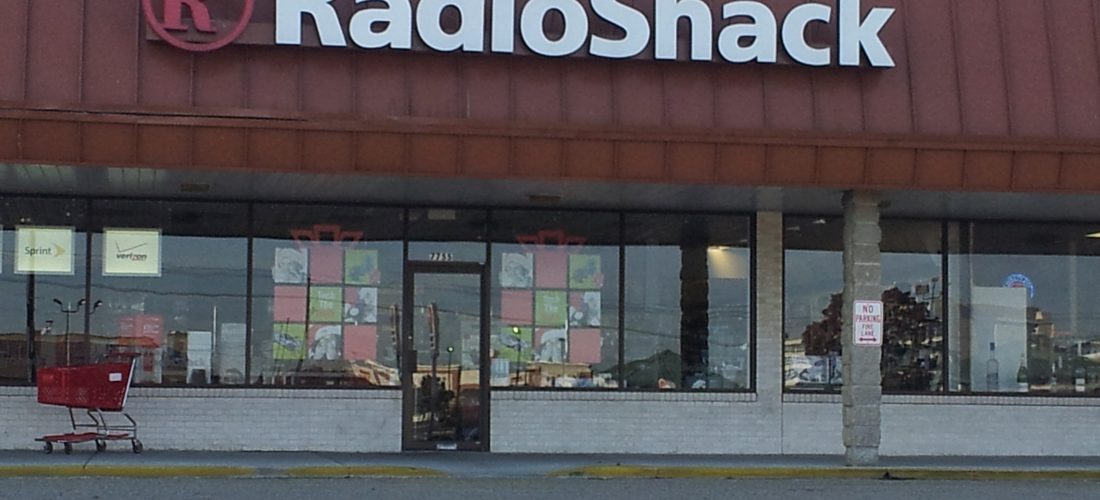A couple of weeks ago I found stumbled on a CNBC article by Courtney Reagan about Retail Chains That Disappeared. As I flipped through the slides I noticed that many of the featured retailers suffered common fates. So, I reorganized the list. I broke down each company and the reasons for their demise (according to the article.) Here are the leading causes of retail death:
1) Big Box Stores
Six of the thirteen retailers featured in the article owed their demise, at least in some part to competition from big box stores. Some of those, like Woolworth and KB Toys were killed by mass market stores, but others, like CompUSA, were done in by larger footprint retailers in the same category.
2) Economy
Five of the retailers on the list were hit hard by tough economic times. 2008 was an especially difficult year. Circuit City, Linens & Things, and Bombay Company all died, at least in part due to lower consumer spending that came with one of the worst recessions in decades.
3) Digital Technology
Video may have killed the radio star, but digital technology did a number on brick-and-mortar retailers like Blockbuster, Borders, and Tower Records. When books, music, and movies went digital, the supply chain costs of moving and storing physical media became more difficult to justify.
4) eCommerce
Even when those products were sold in physical format, it was cheaper to to buy them online. But, eCommerce has had an impact on many other categories and also impacted the death of brands like Loehmans, Filenes, and Daffy’s. In an interesting twist of irony, six of the thirteen retailers abandoned brick-and mortar and have reinvented themselves as eCommerce only companies.
5) Debt
Leveraged buyouts, private equity sales and other financial maneuvering played a role in the demise of a few on the list. Most notable was Linens & Things.
Certainly other factors played a role in the deaths of these major retail stores. Some failed to diversify or invest in technology while others simply lost touch with their consumers. But in any case, those who ignore history are doomed to repeat it. The question for today’s surviving retail stores is how to avoid a similar fate?
Read the news and you might assume retail is on life support. According to a recent Wall Street Journal article, the amount of new brick-and-mortar square footage being opened is down a whopping 87% from 2006. Strip malls everywhere already have vacancies and more retailers are considering store closures. Who can blame them? Foot traffic in some stores is down as much as 50%. If people are spend less time in store, retailers stand little chance of making a sale.
But, salvation exclusively in the online world could be fleeting. Another recent article by the Harvard Business Review suggests that eCommerce isn’t killing retail. In fact, eCommerce growth is slowing and some of those eCommerce sales are going to retailers who also run physical stores. The point of the article for me, is what really hits home:
“Omnichannel retailers—those that seamlessly integrate the best of both digital and physical worlds at each step of the customer experience—are likely to enjoy significant advantages over retailers that try to pursue either one alone or both independently. For omnichannel retailers, websites and mobile apps are not just e-commerce ordering vehicles, they are front doors to the stores. Stores are not just showrooms, they are digitally-enabled inspiration sites, testing labs, purchase points, instantaneous pickup places, help desks, shipping centers, and return locations.”
The retailers who can adapt to this model are most likely to survive. I think 3D printing plays a big role in the transition. In the short term, while its still new and novel to almost everyone, 3D printing can drive traffic and help stores sell more stuff. Longer term, it can help retailers deliver on the omnichannel promise, giving them a better ways to inspire and engage while making products available instantaneously, when and where they’re needed.
At 3DLT, we help retailers and their suppliers offer 3D printable products online and in-store. Just as cloud technology eliminates the need for software, hardware and storage, we’re creating a network that removes the cost and risk that go along with producing, shipping, and selling physical goods. Not unlike books, music and movies before, product manufacturing will go digital. Retailers who engage this megatrend now can position themselves for omnichannel success. Those who don’t could join the ranks of those impacted by digital technology, and that boneyard is full enough already.





